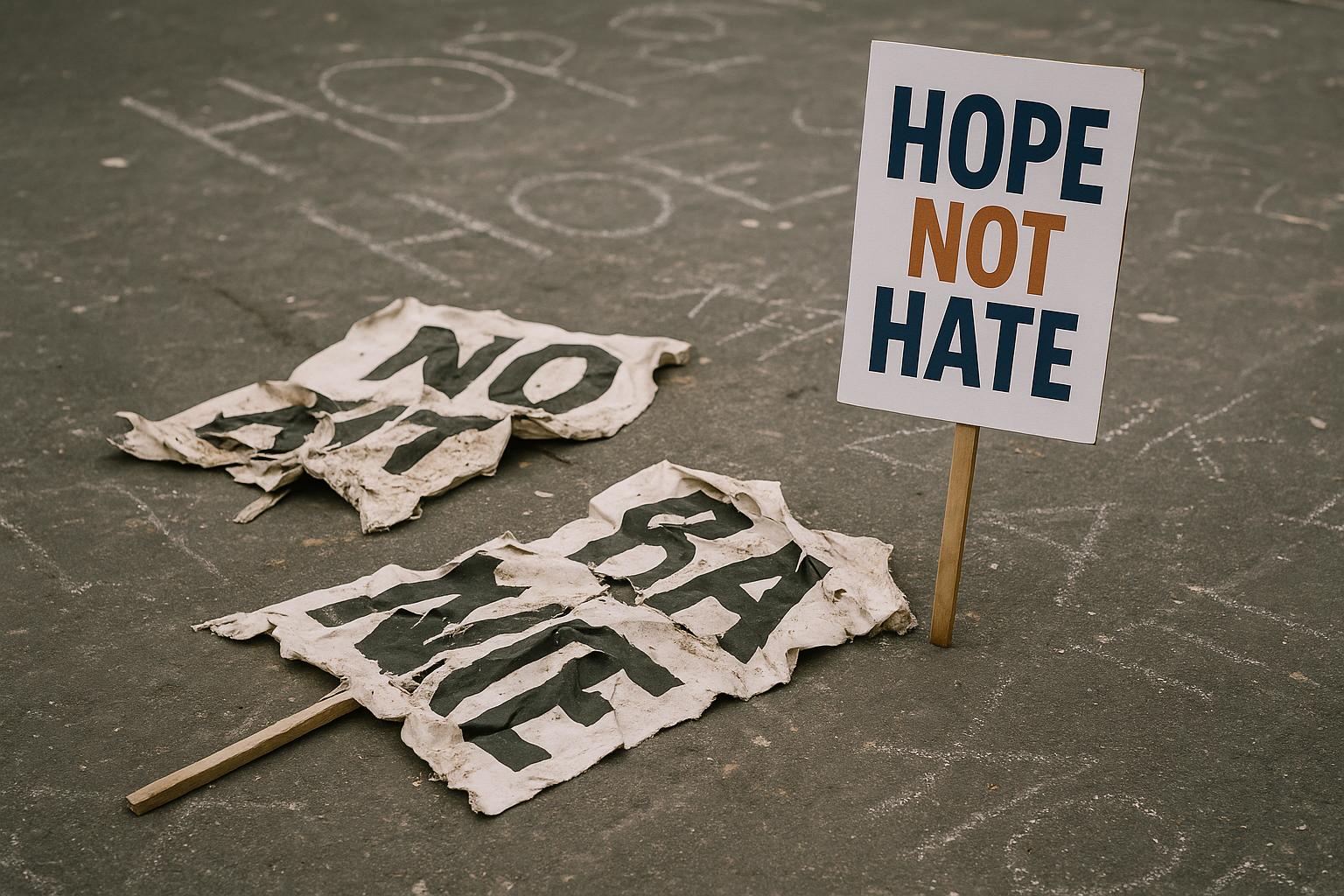On Saturday, central London witnessed a dramatic and deeply unsettling confrontation during the far-right "Unite the Kingdom" rally organised by Stephen Yaxley-Lennon, known as Tommy Robinson. Drawing over 110,000 participants, the event quickly escalated into violence, exposing stark divisions and significant tensions within the city. What began as a large-scale march descended into chaos when splinter groups from the far-right contingent unexpectedly maneuvered through sidestreets off Whitehall, circumventing police lines to seize control of Trafalgar Square. This move effectively trapped and kettled thousands of anti-fascist counter-protesters, many of whom had not anticipated being corralled for more than six hours amid a hostile and aggressive crowd.
According to The Guardian, counter-protesters, largely drawn from trade unions and anti-racist groups, found themselves vastly outnumbered—by estimates of around 20 to one—by supporters of Robinson. These far-right demonstrators were described as waving nationalist flags and were incited by racist and Islamophobic rhetoric that whipped the crowd into a fervour. Robinson himself introduced speakers who framed their narrative around inflammatory claims, such as a “rape jihad” purportedly targeting British daughters, a theme resonating with the crowd’s xenophobic and Islamophobic sentiments. The presence of French far-right politician Éric Zemmour, who spoke of the so-called "great replacement" of European populations by immigrants from the south and Muslim cultures, further underscored the international appeal and ideological alignment of the rally. Elon Musk’s video address, calling for political upheaval and warning that “violence is coming to you,” added a controversial technological magnate’s voice urging confrontation.
Riot police, caught off-guard by the sudden tactical shift of the far-right groups, found themselves under intense pressure as they scrambled to maintain order. Officers reported feeling “attacked on all fronts” and had to urgently reinforce their lines with helmets and shields to hold back the aggressive marchers, who reportedly threw bottles and fireworks at mounted police. The police erected barricades to prevent direct clashes, but the counter-protesters were effectively cornered, with access and exit blocked, leading to anxious moments where individuals pleaded for safe passage. The police justified their containment strategy saying it was “not safe to let anyone out” amid the hostile environment.
Despite the grim circumstances, moments of resilience emerged among the kettled counter-protesters, who broke into spontaneous dance and shared light-hearted moments while confined. Those trapped included unsuspecting visitors such as the Graell family from Barcelona, who had been enjoying a day out and were swept into the chaotic scenes involuntarily.
The violent eruptions that marked the rally resulted in injuries on both sides and multiple arrests, according to a range of news outlets including Reuters, Euronews, and Al Jazeera. The event highlighted the persistent domestic challenges Britain faces regarding immigration and nationalism, with Robinson’s rally reflecting a substantial and vociferous far-right movement. The ‘Stand Up to Racism’ counter-demonstration attracted approximately 5,000 attendees, markedly fewer but equally determined in their opposition.
A cleanup operation soon followed as rain dispersed the far-right crowd, helping police regain control of the area. Scenes from the aftermath, such as an Asian shop employee quietly cleaning vomit outside a locked souvenir shop, symbolised the heavy cost borne by local communities caught in the crossfire of political extremism.
While the “Unite the Kingdom” rally was publicly framed as a call for unity, the reality on the ground revealed a fractured and polarised society where inflammatory rhetoric fuels divisions and violence. The police faced criticism for their inadequate preparedness, particularly for underestimating the far-right's capacity for coordinated aggression and unexpectedly seizing strategic points like Trafalgar Square. This failure left many questioning the authorities’ handling of one of London’s largest far-right demonstrations in recent years and highlighted the ongoing complexities of policing politically charged mass gatherings in an era of heightened social and racial tensions.
📌 Reference Map:
- Paragraph 1 – [1], [2], [3]
- Paragraph 2 – [1], [2], [5]
- Paragraph 3 – [1], [4], [6]
- Paragraph 4 – [1], [3], [4]
- Paragraph 5 – [1]
- Paragraph 6 – [2], [3], [5], [7]
- Paragraph 7 – [1]
Source: Noah Wire Services
